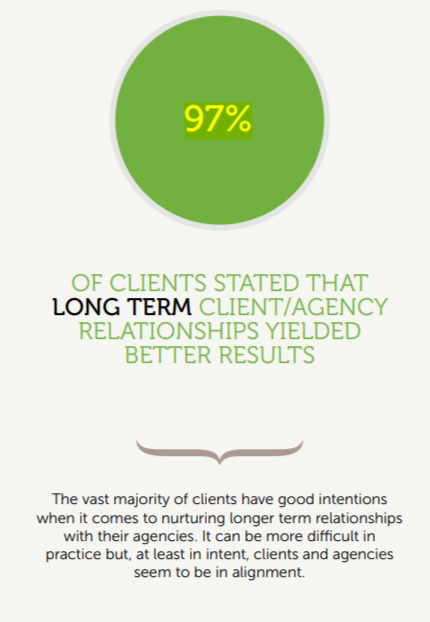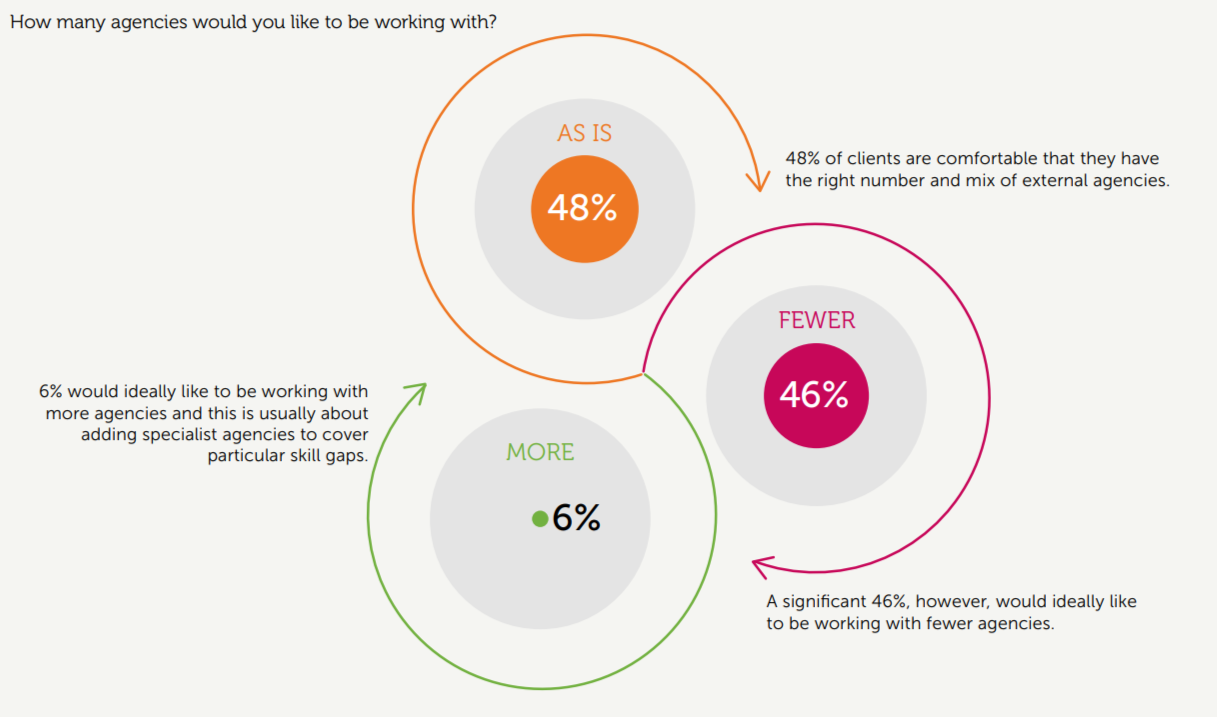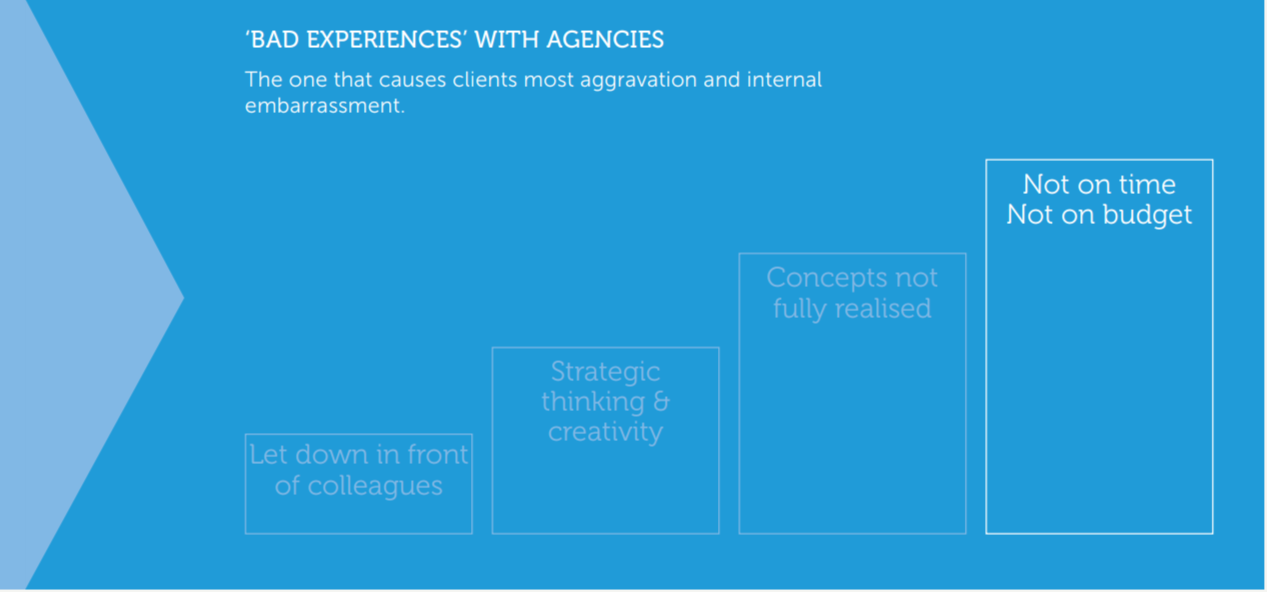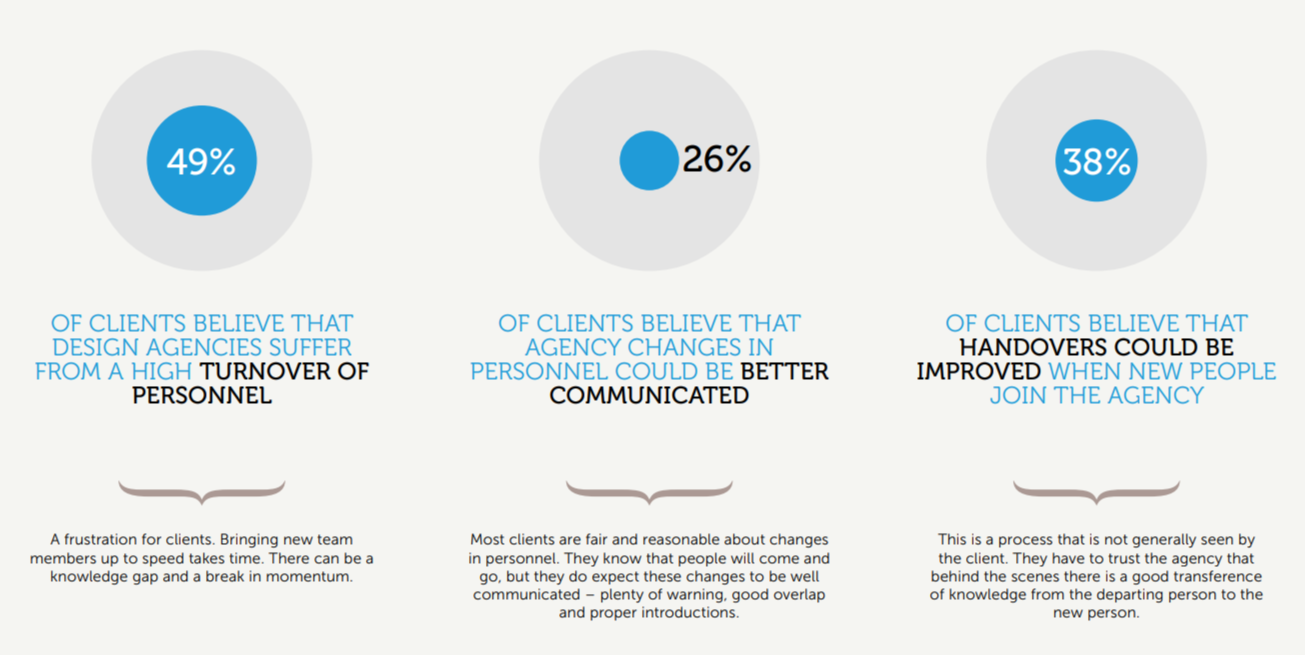How to keep and grow your agency clients (aka preserving your long-term relationships)
Client-agency relationships clearly must start somewhere. In the chicken-and-egg scenario, there’s no relationship until you start working together, but until you do so you don’t know what the partnership will bring. But the best relationships for both parties are long term, built on solid foundations with room for growth and improvement as it develops.
A quick project with a quick turnaround, promptly paid for, sounds great for agency life. But while the easy-come-easy-go nature of this type of work is relatively effortless, it’s also pretty thankless. Nobody really gets to know each other. You can develop a by-the-numbers approach, meet the brief... but never really get under the skin of the client.
And it’s not something that’s favoured by clients, either. According to research What Clients Think 2023, by Up to the Light in association with the Design Business Association (DBA), clients are in it for the long haul. Their research established that an extremely convincing 97% of clients say that long-term client-agency relationships yielded better results. That’s a statistic that should make agencies sit up and take notice.

Because as with any relationship, it’s a two-way street. While the vast majority of clients have good intentions in terms of nurturing longer-term relationships with their agencies, it’s not always easy in practice. So agencies need to pull their weight in terms of keeping the relationship moving forward.
Stronger together
In the research, very few responding clients said they’d like to work with more agencies. 48% said they were happy with the status quo, while 46% said they’d like to work with fewer agencies. Rather than having a lot of agencies working on siloed tasks, they were seeking a more holistic approach. Essentially, the better an agency understands a client, the better the relationship will be.

Here's where a savvy agency will do some relationship-management work. Looking to the future and putting in some strategies can definitely make your outlook a lot rosier. Here are some things to think about:
What can you bring that’s new and different?
Comfort can lead to complacency and complacency to dissatisfaction. To keep your clients happy, you need to consider what skills sets they might be looking for further down the line. For example, could you offer strategic planning? Sustainability advice? Brand activation? What’s working now might not keep working forever, so always keep your eye on what fresh thinking you could offer.
How can you add value?
Rather than just churning out similar work as you’ve always done, how can you innovate? Could you carry out more in-depth reviews and debriefs? Can you get to know the client better, understanding more about their stakeholders and policies, for example? Little extras will go a long way.
When things go wrong...
The research highlighted some areas where clients had had memorably ‘bad experience’ with agencies, with 38% saying they would remember such an experience from over a year ago. Not the kind of impression an agency wants to create.

These experiences include feeling let down in front of colleagues – perhaps through a recommendation that didn’t work out, or an agency presentation to senior colleagues. Haphazard account management was also cited, with unnecessarily painful processes failing to drive a project properly.
Poor execution of concepts was another unfortunately memorable area, with agencies failing to live up to the promise of the original concepts.
And not being on time or within budget was the biggest bugbear for clients. An unforgivable trait for agencies: even if it’s a one-off, clients will always remember you failing to deliver on the most important fronts.
Keeping things on track
Agencies need to consider these potential relationship-breakers and look at how to avoid them... at all costs. A constant attention to detail, and a set of iron-clad processes is a good place to start. Agency management software can be your best friend here, helping keep all your processes together in one place and making sure everyone is singing from the same songsheet.
A good system, like Synergist, can also help you keep a firm track on your projects, making sure they’re running on time and within budget. If for some reason they aren’t, you can at the very least keep the client informed and take a mutual decision about what to do next. Honesty was cited as very important to clients, so managing their expectations at each step of the way is key.
Good communication
Keeping the lines of communication open is another key to the success of your client-agency relationship. 26% of clients said they felt agency changes in personnel could be better communicated, and 38% that handovers could be improved when new people join the agency. That’s a lot of scope for improvement on what is a fairly basic task.

Clients understand that people move on and things change. But it’s a reasonable expectation that their projects will still be managed properly and that whoever is coming on board will be able to seamlessly pick up where the departing person has left off. It’s a good idea to take a look at how well your agency manages its staff retention, too. Some turnover is to be expected, but if you’re losing people you wish you hadn’t, it could be time to put some retention practices in place.
Relationship management between an agency and its clients isn’t rocket science. It’s some basic principles, such as communication, some extra nurturing, such as looking at added value, and, above all, not taking clients for granted. While most will forgive the odd slip up or error, taking your eyes off an existing client to chase a shiny new one will likely end in tears. Appreciate and value what you have... and together you’ll reap the long-term benefits.